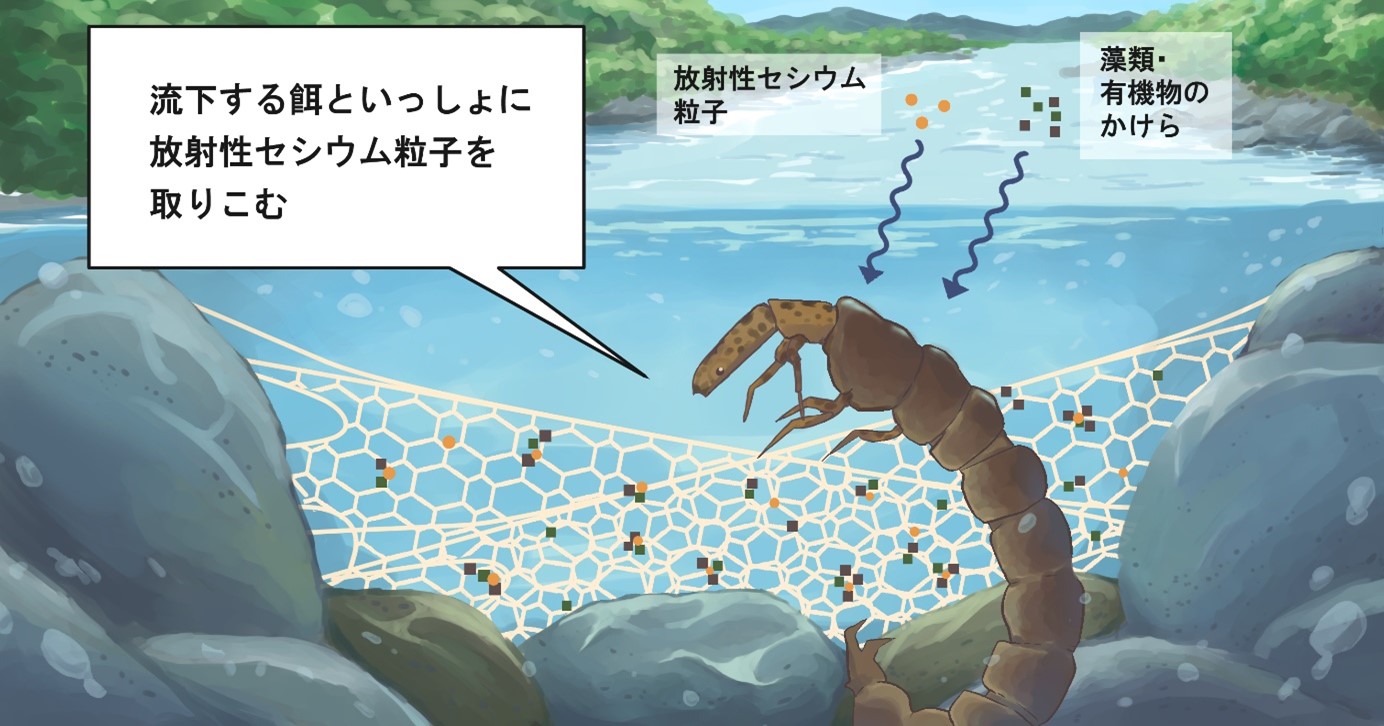DATE2022.07.14 #Press Releases
Elucidating the Transfer of Radioactive Cesium Particles to Aquatic Insects
Disclaimer: machine translated by DeepL which may contain errors.
-No absorption into body tissues was observed.
National Institute for Environmental Studies
Central Research Institute of Electric Power Industry
Fukushima Prefectural Environmental Creation Center
Japan Atomic Energy Agency
National Agricultural Research Institute
Fukushima University
The University of Tokyo Graduate School of Science
Summary
To understand the transfer of radiocesium from the environment to freshwater fish, it is important to clarify the concentration of radiocesium in aquatic insects that serve as food for fish. A research team consisting of members from the National Institute for Environmental Studies, Central Research Institute of Electric Power Industry, Fukushima Prefectural Environmental Creation Center, Japan Atomic Energy Agency, National Agriculture and Food Research Organization (NARO), Fukushima University, and The University of Tokyo Graduate School of Science, measured radiocesium concentrations in aquatic insects (C. sessilifolia) collected in rivers in Fukushima Prefecture. The team measured the concentration of radiocesium in individual aquatic insects (Cs-balls: glass-like insoluble particles of about 0.1-10 µm in size that contain radiocesium) from individuals that showed relatively high levels of radiocesium compared to other individuals. In addition, radiocesium particles were also found in algae and river runoff, which are the food source of the bearded paddlefish.
These results reveal for the first time the uptake of radiocesium particles into organisms and food webs. Radiocesium particles are insoluble, and even if they enter the body as food, there is little risk of radiocesium being taken up by muscles and other body tissues. On the other hand, it is important to consider the presence of radiocesium particles in research studies to understand the dynamics of radiocesium transfer into the food web. This is because radiocesium in radiocesium particles behaves quite differently from water-soluble radiocesium in ecosystems. Also, the presence of radiocesium particles in biological samples may lead to overestimation of radiocesium concentrations in organisms. It is hoped that clarification of the dynamics of radiocesium, including cesium balls, in streams will improve the accuracy of future predictions of radiocesium concentrations in aquatic insects and the fish that feed on them.
The results of this research were published online in the journal PLOS ONE on May 20, 2022.

Figure: Image of radiocesium particles taken up by aquatic insects. The bearded grasshopper may net in the crevices of stones and take in radiocesium particles on the net together with the food that flows downstream (4 out of 46). The radiocesium particles are expelled from the body within a few days and are thought to have no effect on the radiocesium concentration in body tissues.
Professor Yoshio Takahashi of the Department of Earth and Planetary Science participated in the research results.
For more information, please visit the website of the National Institute for Environmental Studies.


